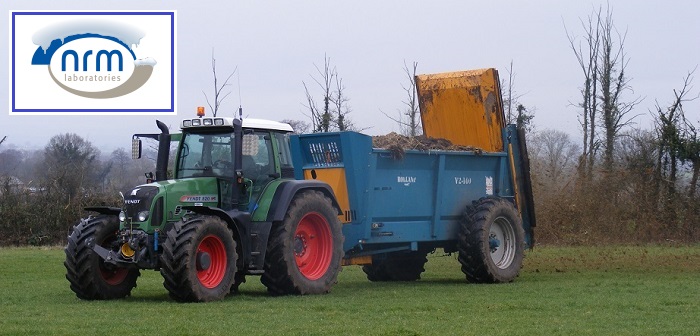Farmers have been challenged to take time to analyse slurry and manure with the promise that they could “save millions of pounds” as a result.
New survey findings published by NRM Laboratories have revealed a “staggering range” of nutrient content exists in cattle-based farmyard manure with the same comment applying to solid pig and poultry manure.
Bracknell-based NRM, which carries out a “significant proportion” of the UK’s agricultural analytical tests, has examined the nutrient content of thousands of samples since January 2011, reaching the conclusion that the “range between samples is staggering”.
“Farmers might rely on ‘typical’ figures such as in the Fertiliser Manual (RB209) when estimating the nutrient value of organic manures, but our analysis shows that they could be way off the mark,” said NRM managing director, Nigel Patrick.
According to NRM, RB209 guidelines put the typical nitrogen content of cattle farmyard manure at 6kg/t, with phosphate and potash at 3.2kg/t and 7.2kg/t, respectively. In contrast, NRM’s analysis “reveals that nitrogen contents in cattle FYM ranged from 1.3kg/t to 32.6kg/t, phosphate contents from 0.5kg/t to 21.9kg/t and potash from 0.2kg/t to 35.0kg/t”.
“When looking at crop-available nutrient levels, the value of that manure could be anywhere between 44p/t and £28/t,” said Mr Patrick. “This means that farmers could either be under-supplying crop needs; and thereby hampering yields, or over-fertilising and wasting both money and precious resources, while increasing the risk of nutrient losses to the environment.”
He also said that similar results can be seen in livestock slurries as well as in solid pig and poultry manure.
“In fact, the range in broiler and turkey litter is even greater than in cattle manure, with a £54/t difference in value between the highest and lowest samples,” he added.




